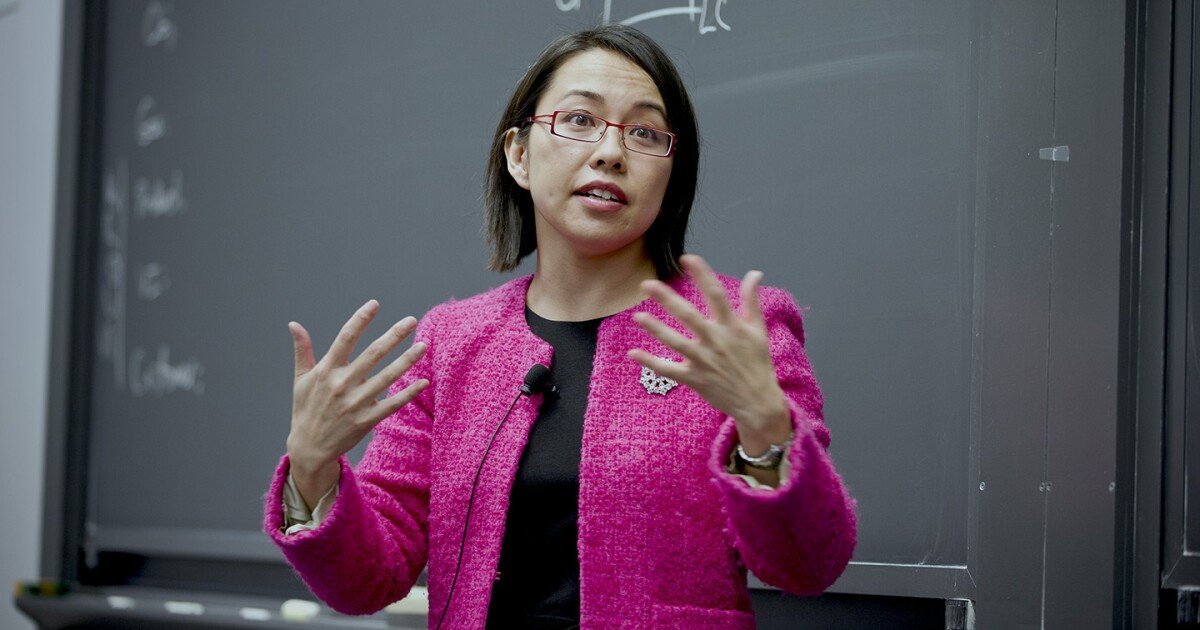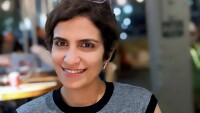Online bidding services disrupted the auction industry when Pai-Ling Yin began pursuing her Ph.D. in Economics in 1997 at Stanford University. She seized the data these services generate to study and understand the new economy emerging from this industry in transition.
“The Internet is accelerating and scaling up transactions,” Yin said. “All these auctions were online. I could see what was happening. ‘Who will succeed? Who will fail? How will it shape the future?'”
These questions led Yin to a PhD thesis on the economics of online auctions for personal computers. They also framed her two decades in academia, where she researched and taught technology strategy, innovation, and entrepreneurship at Harvard Business School, the Massachusetts Institute of Technology (MIT) Sloan School of Management, Stanford’s Department of Economics, and the University of Southern California’s Marshall School of Business.
We try to think, ‘What is the long-term value of any action we take? How do we ensure that we give our customers the best experience?’
In 2021, her former adviser at Stanford, Pat Bajari, who is now chief economist and vice president of the Core AI team at Amazon, recruited her to join his team as a senior manager of research science. Core AI uses economics, statistics and machine learning to understand and design the complex economics of Amazon buyers and sellers.
Today, Yin leads a team of economists, program managers, and engineers tasked with assisting internal partners across Amazon’s research questions on the financial impact of their decisions.
“We try to think, ‘What is the long-term value of every action we take? How do we make sure we’re giving our customers the best experience? Of the many opportunities we have to interact with customers, which one seems to please them the most?'” Yin explained.
For example, the team is working with Amazon’s concession department to model the best way to respond when a customer returns a product. There are a number of options; each has costs and benefits. Which one best helps customers shop at the Amazon Store?
The highlight of the job, Yin said, is organizing teams of experts across disciplines such as operations, engineering, finance and data science to answer these types of questions.
“We bring the best of the best in all these different fields. Many are not my area of expertise. I learn every day and engage in interesting discussions,” she said.
A lifelong learner
Yin, whose parents immigrated to the United States from China via Taiwan, is the first American-born member of her immediate family. She completed undergraduate studies at Indiana University in Bloomington on a scholarship from the Wells Scholars Program and earned concurrent degrees in economics, French, and mathematics, graduating summa cum laude in each.
During her junior year, she was selected as a Truman Scholar, enabling her to pursue a master’s degree in regulation at the London School of Economics and Political Science. After her time in London, she went to Stanford and met Bajari.
“At the time, the Internet was pretty new,” Yin said. “Online businesses were just starting and I was interested in all these new industries.”
Yin was at the forefront of a trend in which educated economists end up teaching at business schools.
Her academic research and teaching career focused on the type of industrial organization (i.e. the structure of actors in an industry) that arises from innovation in technology, which can change the structure by changing the costs of entry and transactions in that industry.
“Any new innovation will create this new way in which economic actors interact,” Yin said of the concept of industrial organization. “What players are emerging? What new technologies are spawned from the original technology? How do industries now interact? How do buyers and sellers interact?”
While teaching technology strategy at MIT, Yin noticed an industrial organization emerging around cell phones and apps after the introduction of the smartphone in 2007. The moment had echoes from the early days of online auctions. Intrigued, she began studying the mobile app economy from her office in Cambridge.
“The beginning of that whole industry was literally in South San Francisco, not even in the Bay Area,” she said. “All these little startups found these little, little offices and did their thing. And I really wanted to be closer to the action.”
The desire to be at the center of the burgeoning mobile computing industry led her back to Stanford, where she co-founded the Mobile Innovation Group with another of her former advisors, economist Tim Bresnahan. Yin’s research focused on entrepreneurship in the mobile app industry as it emerged and evolved with competing mobile services.
This line of research led to a greater focus on entrepreneurship, which she taught at USC from 2016 until she started at Amazon.
While at USC, Yin helped create a required course for the MBA program on critical thinking. The curriculum is centered on helping students deal with ambiguity—how to make progress in the face of uncertainty. Her former students, now at Amazon, tell her they regularly apply lessons from the course, such as taking a few minutes to ask another question about a problem, to advance their thinking.
“That was the spirit of the class,” she said. “What are these little tools that you might think of as little interventions that aren’t going to think optimally, but will get you thinking better? So, when you practice those skills, you’re going to get faster and better and eventually develop that muscle.”
“As a teacher, Pai-Ling allowed her students to think outside the box—each answer begets a new question, and good solutions often come by probing wider and deeper,” said Darren Setiawan, a senior product manager at Amazon who was Yin’s student, teaching assistant and research assistant at USC. “I particularly enjoyed her courses and often refer back to her framework when dealing with complex work and life decisions.”
Practice what you learn
When COVID-19 hit, Yin had been in academia for nearly two decades and was ready for a change. The opportunity to become a member of Amazon brought a chance to put her many years of training as an economist and researcher into practice. For example, she brings short- and long-term thinking to the problems her team is asked to solve.
“In the short term, the problem is, what is the cost-benefit analysis of the problem we’re facing now? But the world is dynamic and changing. You know the analysis has to be redone in a few years. How do we think about anticipating flexibility in the models we’re creating?” she explained.
The teacher in her also embraces ambiguity and looks forward to the next big problem her team solves, whatever that is.
“That’s the exciting part,” she said.
Solving this problem, she noted, will require collaboration between people with a wide range of expertise — economists, data scientists, psychologists, engineers and program managers. That’s why she recommends that young researchers learn to appreciate the world through multiple lenses: the lenses of their specific areas of expertise as well as the lenses of their peers and colleagues.
“You have expertise, and that’s wonderful,” she said, as if addressing a group of newly minted Ph.D.s. “But it is now your task to find out where you can contribute and where you want to learn from others. That approach will contribute to a richer life both socially and problem-solving.”



